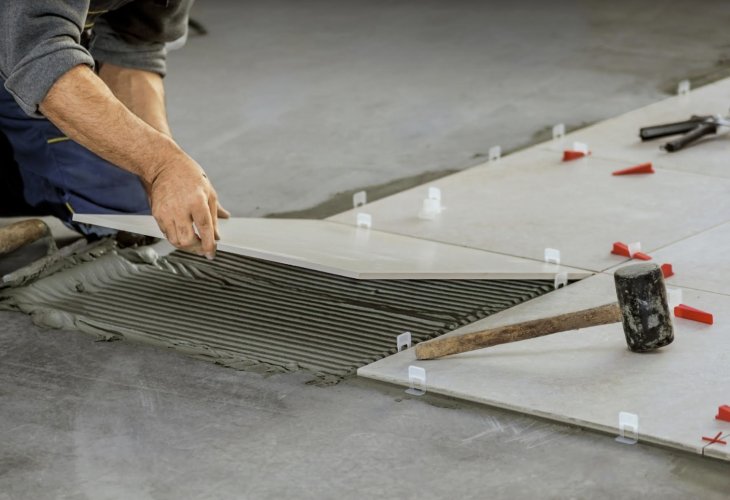Mastering Home Flooring: Crafting Your Dream Space
With endless options in flooring styles, finding the right choice can be overwhelming. Discover how to navigate your way through colors, sizes, and textures to create a beautiful and efficient floor plan.
 (Photo: shutterstock)
(Photo: shutterstock)Flooring is one of the most vital aspects of a home, both for its essential role as a livable surface and for its significant impact on home aesthetics. Sometimes, simply replacing the flooring can remarkably upgrade a home.
The selection of floor tiles and wall coverings is enormous: colors, sizes, textures abound.
This extensive variety can be bewildering to many; usually, it's beneficial only to those who know exactly what they're looking for and use the choices to hone their results. Otherwise, it can trap you in an endless loop of visiting one showroom after another, making decisions even harder.
Thus, defining your desired direction is crucial, and it's important to limit your shop visits to avoid unnecessary confusion.
Basic Guidelines for Choosing Flooring
Quality – Emphasize the tile quality. Consider requesting to see the certification in-store.
Color – It's vital to understand that the color seen in-store may differ from what's at home, due to several factors:
1. Lighting - Showroom lighting differs from home lighting.
2. Tile position - Tiles may be presented upright. Request to see them laid flat for a more realistic perspective.
3. Batches - Different production batches can vary slightly in color (hence, buying extra is crucial as discussed later).
Tile Size – The tile size must be proportional to the room size. Small spaces with large tiles can feel cramped, defeating the purpose of creating an impression of space.
Large tiles can be visually stunning and provide a sense of space, but consider two things:
1. They are challenging to lay perfectly flat; ensure skilled installation.
2. They often increase installation costs due to complexity.
I suggest opting for second-grade large tiles to ensure a flat installation.
Small tiles are generally used for intricate layouts such as mosaics, usually with an additional installation cost.
Practicality – Consider how much maintenance you're willing to invest. Smooth, glossy, light tiles are beautiful but impractical. The less glossy and more variably colored the tile, the less dirt is visible.
Anti-Slip Flooring: For wet areas, anti-slip tiles are vital. Roughness levels are indicated by R-numbers, ranging from 9 (standard) to 11 (very rough).
Layout Planning: Create a detailed plan marking tile placement in every room, showing where the contractor starts to avoid cut tiles in prominent areas.
This plan is also for wall coverings. Mark starting points, especially when mixing different types and sizes of tiles.
In spaces with various tile types, like bathrooms, note the tiles' sizes to maintain continuous grout lines (joints).
When mixing several tiles, ensure they are from the same manufacturer to avoid size discrepancies that disrupt alignment.
For decorative patterns, lay the tiles on the floor to check the pattern before gluing. Do not leave this decision to the tiler.
Grout – The gap between tiles, typically 3mm. As a designer, I find it excessive aesthetically. I often opt for 2mm, ensuring precise tile cutting for a seamless look.
For cases where a zero gap is desired, exceptional precision in cutting and installation on stable ground is required.
Grout Material – The material filling the grout lines can vary in color, sometimes matching the tiles and other times providing an appealing contrast.
Wastage – Always purchase extra tiles. During transport, some may break, and many cuts are needed during installation. A 15-20% excess is wise.
For large tiles, calculate extra not by percentage as a few additional tiles suffice for adjustments.
Though it's an extra expense, running out of tiles mid-project is inconvenient, possibly delaying construction if additional tiles aren't immediately available.
Style runs can deplete your ordered series, necessitating a new batch often with noticeable color differences.
Recently, due to a supplier error, my ordered tiles were insufficient, and the new delivery differed in shade. My fix involved using the mismatched tiles in hidden areas like behind future cabinets. Such solutions aren't always feasible.
Tammy Rotenberg is an architect and interior designer. For questions and feedback:office@tammyrotenberg.com

